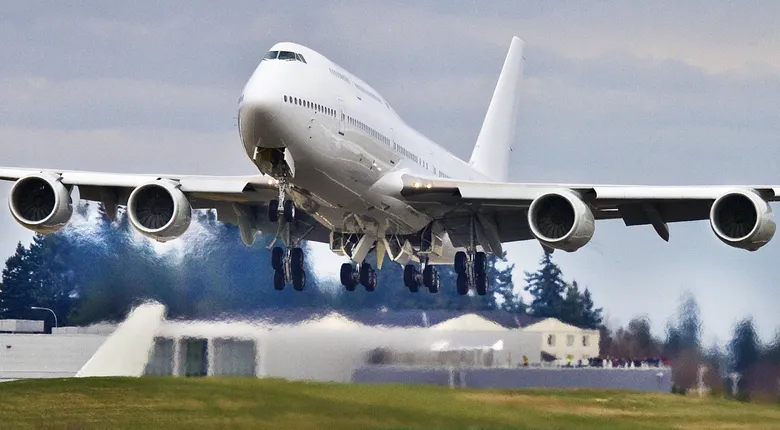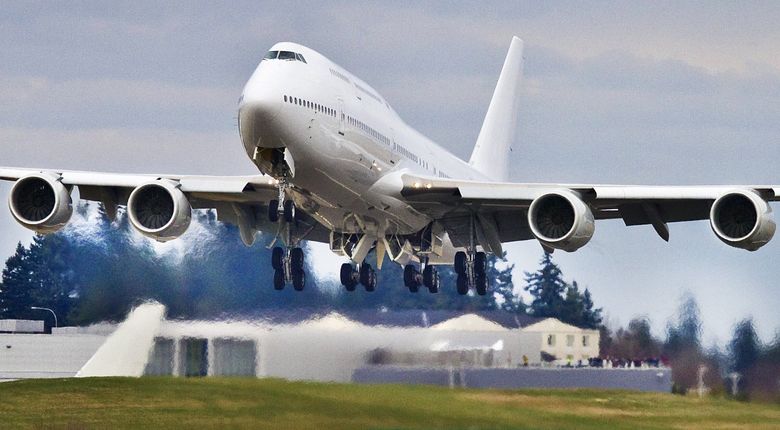I remember the first time I saw a Boeing 747. It appeared out of the clear summer sky, the biggest airplane I’d ever seen, bright in TWA livery with its distinctive hump. Yet it floated with surprising grace, turning for its final approach to Phoenix Sky Harbor International Airport. The year was 1970 and I was 13.
How about you?
A moment for sense memory is appropriate as the last 747 was rolled out of the Everett plant recently, on its way to be painted in Portland before returning for delivery to Atlas Air. The “Queen of the Skies,” reduced to mundane freight hauling.
Only 30 of the original jumbo jet were ordered over the past five years. The last one for passenger service was delivered to Korean Air in 2017.
Boeing produced 1,574 “Queens” for more than 50 years. All of them were assembled in the purpose-built Everett plant, in the largest building in the world under one roof by volume.
Such Pharaonic proportions were appropriate. The 747 was the largest passenger airliner ever built up to that time, almost twice the size of the 707. The first was unveiled in 1968, christened by 26 flight attendants representing each airline that had placed orders.
It was pushed into development by the aspirations of the legendary Juan Trippe, president of Pan American World Airways, America’s unofficial overseas flag carrier. The goal: an airplane capable of carrying 366 passengers over long distances. It inaugurated the widebody, spacious airliner.
The 747 was the pinnacle of the glamour and comfort of the Jet Age, so very different from today’s cattle-herding in the sky.
It also serves as Air Force One (although technically any aircraft carrying the president has that name), as well as the Air Force’s “Nightwatch” planes as part of command and control of U.S. nuclear forces, specifically equipped to withstand the electromagnetic pulse of a nuclear explosion. Boeing is building a new 747 Air Force One, late and over budget.
But the original Queen of the Skies was the creation of a very different Boeing, a very different Seattle.
The company was headquartered here, and it was by far the most important employer in Jet City and the entire region. Not only that, but the 747 entered service amid the Boeing Bust, as the company was cutting jobs after years of rapid growth slammed into low gear. More than 60% of the workforce was laid off, and the company was close to seeking bankruptcy protection.
With the success of the 707 and 727, Boeing’s workforce here swelled to 100,000 in the 1960s. Boeing was involved in Project Apollo, too, building Saturn V rocket boosters among other hardware for the moon shot. And production of the B-52 bomber continued. Seattle was more of a company town then than it ever was with Amazon.
But the recession of 1969-70 hit Boeing’s orders hard, with airlines canceling orders. The Queen of the Skies, already a big financial gamble, was among those affected. In 1970, Boeing received no new orders. To make matters worse, the federal government withdrew support for Boeing’s supersonic transport. Seattle’s unemployment rate shot up to 10%, compared with the national rate of 4.5%. Eventually it would hit 13.8%.
The recovery was slow, complicated by the oil shocks of the 1970s, but the 747 played an instrumental part.
Boeing of Seattle also did far less outsourcing than today. The 747 and 737 were assembled with around 35% to 50% outsourced parts, compared with 70% for the 787 Dreamliner by Chicago’s (and now D.C.’s) Boeing.
Deregulation of the airline industry in 1978 was initially a boon for the 747. It could deliver large numbers of passengers to the new “hub and spoke” system. At hubs, they could board smaller airliners for their destinations. The 747 continued to dominate transcontinental travel. The 747-400, debuting in 1988, could fly 8,345 miles nonstop.
Trouble gathered when Airbus launched its double-decker A380 in 2007. With as many as 615 seats (versus 374 for the 747-400), it’s the largest passenger airliner ever made. This appealed to the “super-connector” airlines, especially Emirates and Qatar. But even Airbus is ending A380 production, the airliner never having achieved Airbus’ ambitions.
Meanwhile, Boeing’s 777 and 787, both highly efficient, provided in-house competition for the Queen.
Aviation analyst Scott Hamilton wrote: “As it turns out, there was a debate within Boeing as far back as 2004 about whether to cancel the 747 program then. The 777-300ER was just entering service. There was a recognition within Boeing that the -300ER was the beginning of the end for the 747.”
The pandemic’s drop in airline travel was the final spike in the Queen’s heart. Two years ago, British Airways announced that it was retiring its fleet of Boeing 747s four years ahead of schedule. The aviation analytics firm Cirium recently estimated that only 44 passenger versions of the 747 are still in service. More than 300 747 freighters are flying.
I go back to that first look of the Queen of the Skies. I always imagined flying in one, enjoying a cocktail in the lounge up the spiral staircase from the main cabin. But I never did. Now, all I can do is toast its accomplishments from the ground.
Cheers.


